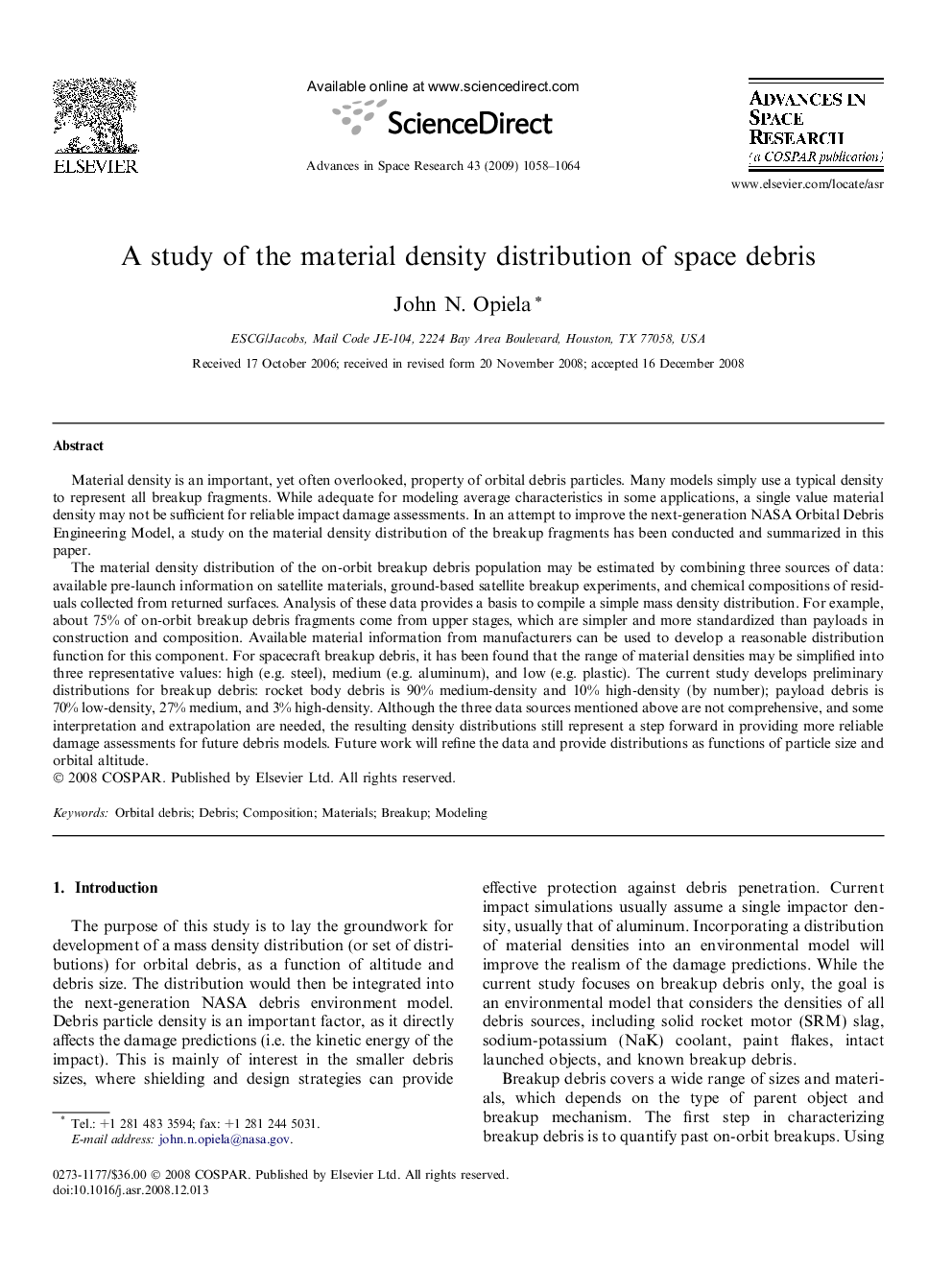| کد مقاله | کد نشریه | سال انتشار | مقاله انگلیسی | نسخه تمام متن |
|---|---|---|---|---|
| 1767073 | 1020175 | 2009 | 7 صفحه PDF | دانلود رایگان |

Material density is an important, yet often overlooked, property of orbital debris particles. Many models simply use a typical density to represent all breakup fragments. While adequate for modeling average characteristics in some applications, a single value material density may not be sufficient for reliable impact damage assessments. In an attempt to improve the next-generation NASA Orbital Debris Engineering Model, a study on the material density distribution of the breakup fragments has been conducted and summarized in this paper.The material density distribution of the on-orbit breakup debris population may be estimated by combining three sources of data: available pre-launch information on satellite materials, ground-based satellite breakup experiments, and chemical compositions of residuals collected from returned surfaces. Analysis of these data provides a basis to compile a simple mass density distribution. For example, about 75% of on-orbit breakup debris fragments come from upper stages, which are simpler and more standardized than payloads in construction and composition. Available material information from manufacturers can be used to develop a reasonable distribution function for this component. For spacecraft breakup debris, it has been found that the range of material densities may be simplified into three representative values: high (e.g. steel), medium (e.g. aluminum), and low (e.g. plastic). The current study develops preliminary distributions for breakup debris: rocket body debris is 90% medium-density and 10% high-density (by number); payload debris is 70% low-density, 27% medium, and 3% high-density. Although the three data sources mentioned above are not comprehensive, and some interpretation and extrapolation are needed, the resulting density distributions still represent a step forward in providing more reliable damage assessments for future debris models. Future work will refine the data and provide distributions as functions of particle size and orbital altitude.
Journal: Advances in Space Research - Volume 43, Issue 7, 1 April 2009, Pages 1058–1064